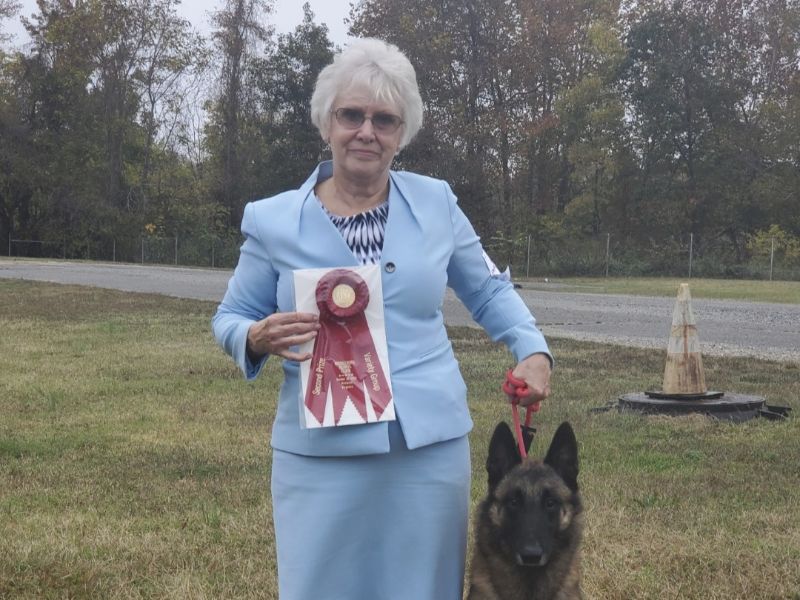Interview with Susan Legg, Breeder of Broadcreek Belgian Malinois
Please tell us a little bit about yourself. Where do you live? What is your breed? What is your kennel name? Do you have a website? How long have you been in dogs? How long have you been breeding dogs? Who are some of your best-known dogs?
Susan Legg: I live in Delaware and Florida. I have bred Belgian Malinois for 31 years. I have also bred German Shepherd Dogs for 50 years and Rottweilers for 15 years. I have bred over 300 Champion Malinois, 14 No. 1 ranked Malinois, three Best in Show dogs, and numerous titled dogs in performance sports, police dogs, and service dogs. BROADCREEK is my kennel name.
I have been in dogs since I was five years old; my father bred Beagles. I have been breeding dogs for 50 years.
Some of my best-known dogs include: CH Broadcreek’s Mirabella who won 10 all-breed Bests in Show, 50 Group Ones, and won the National Specialty at 12 years old; BISS RBIS GRCP Broadcreek’s Darth Vader Of Darste TT who has been No. 1 three times; BISS BIS GRCP Broadcreek’s Hurricane CGC TT who has been No. 1 four times and won Best in Show; CH Broadcreek’s Gus Of Leelinaw who won two Bests in Show and is the only Malinois that has won a Group placement at Westminster, with a Group Two; and CH Broadcreek’s Hoosier Knight CGC who won the Breed at Westminster four years in a row and won the National Specialty at 14 months old.
As a Breeder, can you share your thoughts on your breed today? Is breed type strong? Are there things to be concerned about? Are there any health-related issues? Have you worked with breeders overseas? Are pet homes typically available for your breed?
Susan Legg: The breed is in trouble; there are dogs that don’t even resemble the written Breed Standard. I am seeing breed type slipping away. I see too many dogs that are long and lacking in bone, and males that are bitchy. I am concerned about Malinois becoming too small to be able to do the work they were bred for. There are a lot of dogs with missing teeth. Too many dogs with straight shoulders and over-angulated, cow-hocked rears. Too many gay tails and hooked tails. Light, round eyes instead of dark, almond eyes. Incorrectly shaped ears and ears too large, and some too wideset.
As for working with overseas breeders, I imported a dog from Italy two years ago and a dog from France around 20 years ago. I also leased a bitch and bred her to a French import. I place a lot of my dogs in homes with families and try to encourage them to show their dogs or do performance sports.
As an Exhibitor, can you comment on recent entries in your breed? Are majors available in your area? Does your breed often participate in Companion and Performance events? How can newcomers in your breed be encouraged to join the sport of dogs?
Susan Legg: Entries tend to exist in certain areas. We do have majors in our area. A lot of my dogs compete in all performance events too. I try to get all of my puppy buyers to show their dogs or compete in performance sports and take classes with AKC clubs.
What are the biggest challenges facing the dog show community as a whole and how can we address them? And finally, what are some of the positive changes you’ve seen in your breed and in the dog show community as a whole over the past decade?
Susan Legg: The cost of entries, overnight parking fees at dog shows, and gas prices are the biggest challenges. We have also lost a lot of knowledgeable judges.








